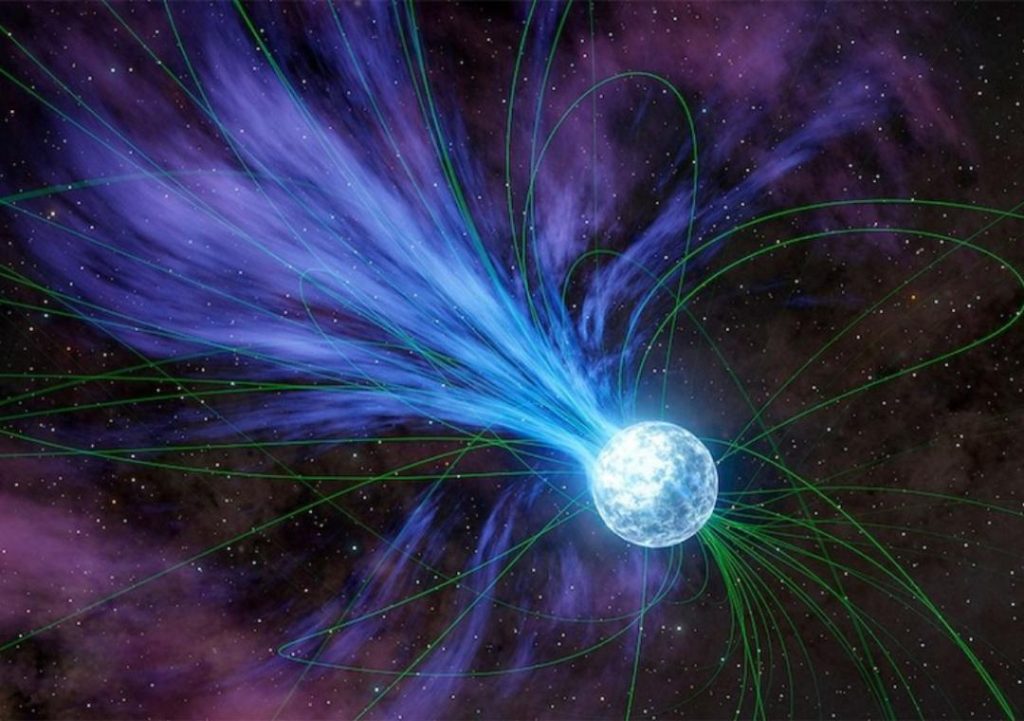
Gold & Platinum Created through Neutron Stars’ Explosions: Study
For centuries, humans have been fascinated by the origin of precious metals like gold and platinum. While we’ve long known that these elements are found on Earth, the process by which they were formed has remained a mystery. Until now.
A recent study led by Columbia University student Anirudh Patel has shed new light on the creation of these valuable metals. According to the research, magnetars – highly magnetized neutron stars – played a crucial role in the formation of gold and platinum in a cosmic event that took place over 20 years ago.
What are Magnetars?
Before we dive into the details of the study, let’s take a step back and understand what magnetars are. Magnetars are a type of neutron star that is characterized by its incredibly strong magnetic field. These stars are formed when a massive star collapses under its own gravity, resulting in a massive explosion known as a supernova.
During this explosion, the star’s core is compressed into an incredibly dense object known as a neutron star. The intense magnetic field of the star is what makes it a magnetar. This field is so strong that it can be hundreds of thousands of times stronger than the Earth’s magnetic field.
The Formation of Gold and Platinum
So, how did magnetars help create gold and platinum? According to the study, when a magnetar explodes, it releases a massive amount of energy in the form of flares. These flares contain elements like gold and platinum, which are forged in the intense heat and radiation of the explosion.
The scientists believe that the magnetar explosion that took place over 20 years ago was particularly significant because it occurred in a region of the galaxy where the conditions were ripe for the formation of these precious metals.
How Often Do Magnetars Explode?
The study suggests that magnetars explode approximately once every decade in the Milky Way galaxy. However, when you look at the entire observable universe, the frequency of these explosions increases to once per year.
This is because magnetars are found in other galaxies, and their explosions can be detected from great distances. The scientists used data from NASA’s Fermi Gamma-Ray Space Telescope to identify the magnetar explosion that occurred over 20 years ago.
What Does This Mean for Us?
The discovery of how gold and platinum were formed has significant implications for our understanding of the universe and the formation of life on Earth.
For one, it highlights the incredible power of magnetars and their ability to create the building blocks of life. It also underscores the importance of continued research into the mysteries of the universe and the formation of precious metals.
Furthermore, this study has significant implications for the field of astrochemistry, which is the study of the chemical compounds found in space. By understanding how gold and platinum are formed, scientists can gain a better understanding of the processes that occur in the universe and how they relate to the formation of life on Earth.
Conclusion
In conclusion, the study led by Columbia University student Anirudh Patel has shed new light on the formation of gold and platinum. The discovery that magnetars played a crucial role in the creation of these precious metals is a significant breakthrough in our understanding of the universe.
As we continue to explore the mysteries of the cosmos, we are reminded of the incredible power and complexity of the universe. And who knows? Perhaps one day, we’ll discover even more secrets about the origins of precious metals and the formation of life on Earth.






